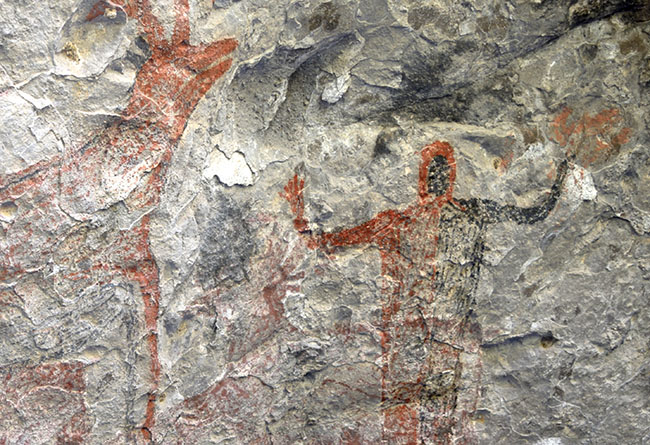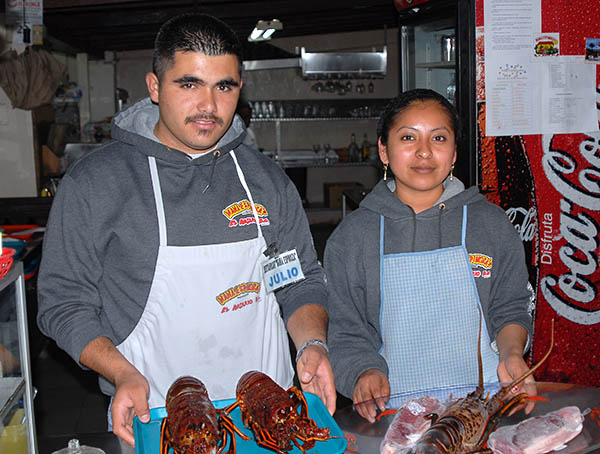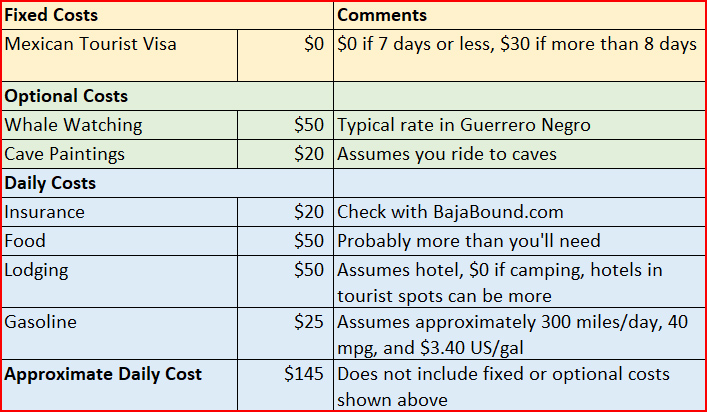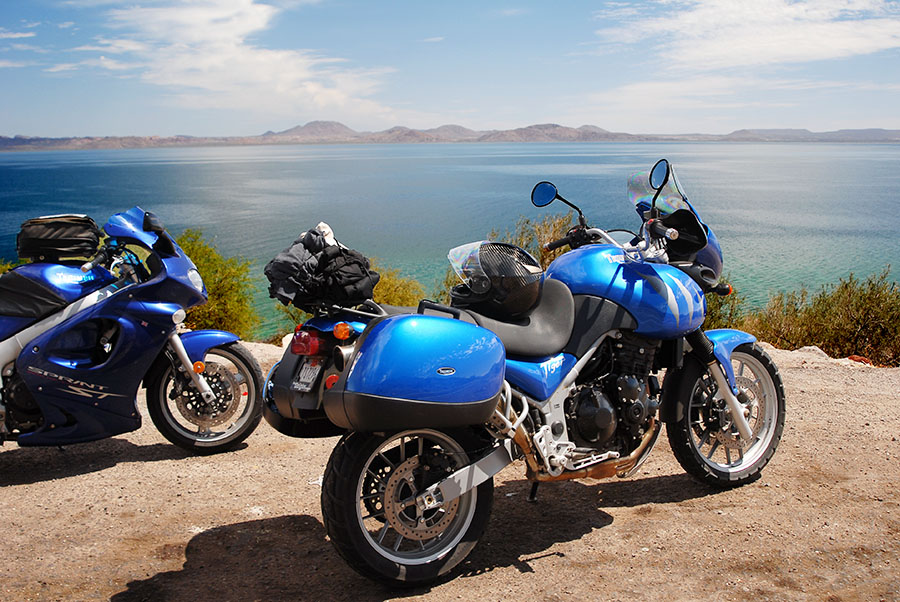From time to time, I hear this question: How much cash should I take to Baja? Costs have gone up in Baja (like everywhere else), but Baja is still a cheap date. How much you’ll need will depend on your tastes, how much you drink, and where you stay. To cut to the chase, when I ride in Baja, I’ll take a thousand bucks with me if I’m going to be there for a week, and I always come home with money in my pocket. You can bring a credit card to Baja, but once you get out of the tourist spots (Ensenada, San Felipe, Loreto, La Paz, and Cabo), Baja is mostly a cash proposition. In these tourist spots, costs will be more in line with what you’d pay in the US for food and lodging, too. You can’t depend on being able to use your credit in the smaller towns and at the more remote gas stations.
Expenses in Baja will include food, gasolina, lodging, and if you’re going to see the whales or the cave paintings, the cost of admission for those things. Figure on $50 for a half-day whale-watching tour (it’s worth every penny, in my opinion); the cave paintings a little less. Both are great things to see (many folks describe them as life-changing, and I’m in that category). If you plan to have a drink or two at night, you’ll need a bit for that, too.

Gasoline prices in Baja are usually about the same as they are in California. That’s usually works out to something north of $3 per gallon. They sell it by the liter and it’s easier to pay in pesos, but they’ll take dollars at an exchange rate that is not usually in your favor. It’s best to have pesos and pay in the native currency. You can see our earlier blog on fuel in Baja for more information.

Food is inexpensive if you eat in other than touristy restaurants. My friends think I’m a genius at finding good spots to eat in Baja, but my secret is simple: I just look for the spots with lots of cars and pickups parked in front. It works every time. I’ll usually budget $25 US a day for food. It’s easier to pay in pesos, but most restaurants will also take dollars. I might add this: I’ve never had a bad meal in Baja. I could write a book just about the restaurants down there. There are many hidden treasures. We’ve listed a few on our Baja page.

Hotels are typically between $25 and $70 per night outside of the tourist towns. In the smaller spots, $25 seems to be the norm. In the more well known hotels (like Malarrimo’s in Guerrero Negro), it’s going to be more like $70 per night. The rooms won’t be fancy, but they will be clean, and if you’re like me, you’re not going to be riding Baja as a hotel critic.
Don’t forget your Baja insurance. You have to get a separate insurance policy for your motorcycle when you go into Baja, and based on my 30-plus years of riding south of the border, BajaBound Insurance is the best. You should purchase it online before you cross into Mexico, and the BajaBound website makes that easy to do.
If your stay is going to be longer than a week, you’ll need to pay for a Mexican tourist visa (a week or less is free). The cost for a tourist visa is $30. You can (and should) pick up your tourist visa as soon as you cross into Mexico.
Here’s a summary of how the above stacks up (all amounts are in US dollars):

As I mentioned at the start of this blog, when I go into Baja for a weeklong trip, I’ll usually start with $1000 in my wallet and I usually return with money left over. In the event you do need more cash, there are banks in the larger towns with ATMs, and they’ve always worked for me.
We have much more information, including suggested riding itineraries, on our Baja page. You can read about some of our great rides in Baja here.
Want more info on exploring Baja on a motorcycle? Pick up a copy of Moto Baja!



